Techniki rendangu przekazywane przez singapurskie rodziny
38 minuta read Poznaj dziedziczone w rodzinach rendangu metody z Singapuru — łączące rempah, powolne duszenie i kerisik — aby zachować smak, wspomnienia i wielokulturowe dziedzictwo. październik 14, 2025 18:07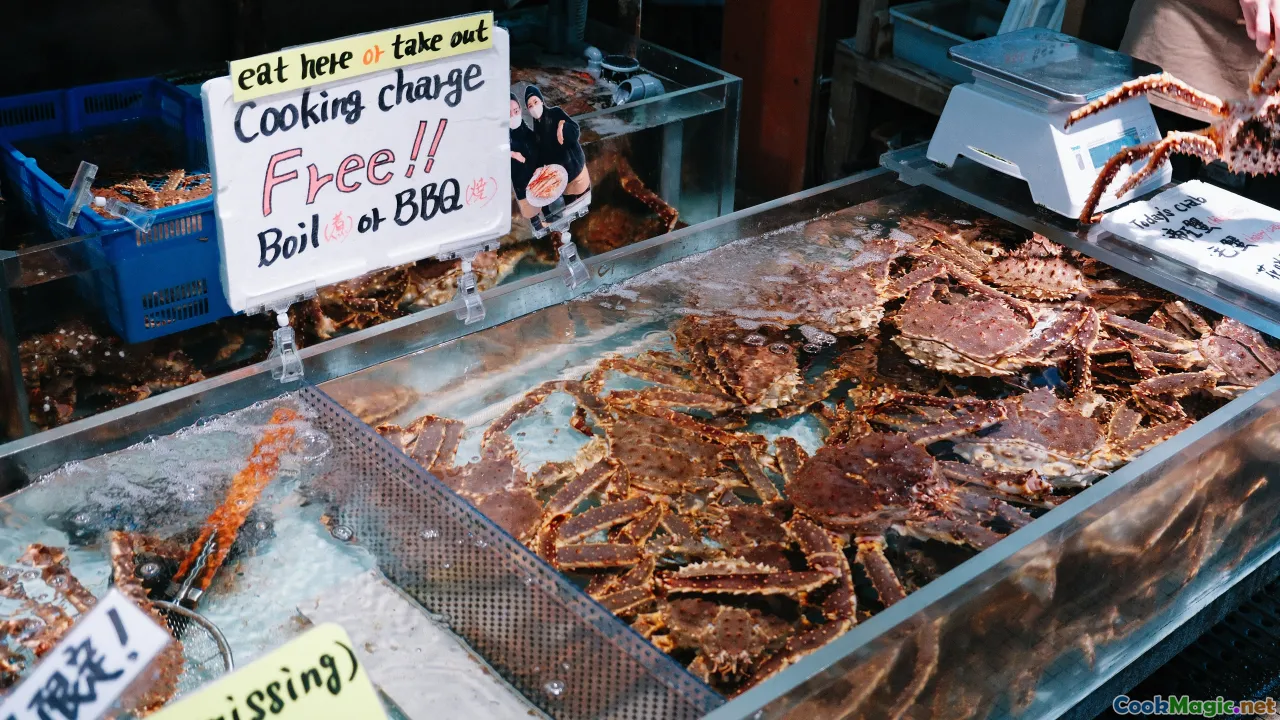
If you walk past the halal butcher at the Haig Road market in the week before Hari Raya, you’ll see a quiet choreography unfolding. An aunty with henna-smudged fingertips taps a beef shin, judging bounce and marbling. A teenage boy ferries packets of spice past bowls of grated coconut. Someone, somewhere, is toast-sweetening kerisik to the color of old teak. This is how rendang begins in Singaporean homes—not with a recipe card, but with people, errands, and a community of know-how held together by memory and the promise of a meal that stains the fingertips with fragrant oil.
A Morning at Geylang Serai, Where Rendang Begins

O 6:30 rano podłoga jest śliska od topiącego się lodu i wody kokosowej na rynku Geylang Serai. Sprzedawca kokosów — każdy targ ma swojego — przepuszcza dojrzałe połówki kokosów przez młyn, pozwalając, by białe wiórki kokosowe opadały do wysokiej miski. Uśmiecha się, gdy pytasz o „ikut rendang” — mielone na rendang — co oznacza, że chcesz nieco grubszą drobinkę dla bogatszego mleka, dobre do dwukrotnego wyciskania. Zgrupowania kobiet w tudung konsultują się nawzajem po malajsku w szybkim tempie: serai (trawa cytrynowa), lengkuas (galangal), kunyit (świeża kurkuma), daun limau purut (liście kaffir lime), daun kunyit (liście kurkumy), asam keping (suszone plasterki tamaryndu). Stoisko z gotowymi mieszankami przypraw (bumbu) już robi interes, ale usłyszysz kilka surowych głosów: „Buat rempah sendiri lah.” Zrób własną pastę. Podczas świąt skróty są potępiane.
Stoisko na rogu sprzedaje liście kunyit związane raffią; ich zapach to ostry, zielony echa kurkumy. Rudy-rudawy rzeźnik wyciąga z haka kawałek goleń; kredowe kości szpiku wystają z końców. Wie: goleń jest przeznaczona na rendang otwartego domu, ten, który może leżeć na stole godzinami i tylko pogłębiać smak. Już kroi kawałki na grube, sensowne kostki — zbyt małe wysuszają mięso zanim sos zgęstnieje; zbyt duże będą zbyt szorstkie dla elderów, którzy będą jeść delikatnie palcami. Powietrze niesie zapach mielonych chili, ostry zapach świeżej kurkumy, który przez dni wygra z twoimi paznokciami, oraz krystalizująca słodycz mleka kokosowego unoszącego się z gorących rondli. To zapach sezonu, a także zapach tradycji, która uczyniła dom z migracji. Rendang w Singapurze mówi po minangkabau, malajsku, Peranakan oraz dialekcie kuchni HDB.
What Singaporean Families Mean by "Rendang"

Zapytaj trzy rodziny, a usłyszysz pięć wersji rendangu. Jest to bowiem nie jedno danie, lecz słownictwo. W sercu jest cierpliwość połączona z tłuszczem kokosowym, rempah, który możesz wyczuć z‑tarasu, i moment pecah minyak — gdy olej oddziela się od pasty przypraw i danie objawia się błyszczącym, wulkanicznym wrzeniem. Historicznie potrawa ta była eksportem Minangkabau, przemierzając cieśninę z migrantami z Zachodniej Sumatrze. Przez port Singapuru i malajskich kampongów rendangu przejął zakupy i nawyki naszej wyspy. W uliczkach za Meczetem Sułtana, Rumah Makan Minang wciąż serwuje wersję bezkompromisowo z Zachodniej Sumatrze: ciemną, prawie czarną od godzin redukcji, z jedwabistym, prażonym kokosowym fundamentem. Przejdź kilka drzwi dalej do Hajjah Maimunah na Jalan Pisang i znajdziesz subtelniejszą, bardziej malajską wersję, czasem jedwabistą, czasem z odrobiną słodyczy, która podkreśla ryż, nie naruszając go. Jest też Warong Nasi Pariaman przy North Bridge Road, roszczący sobie miano jednej z najstarszych knajp nasi padang w mieście, gdzie rendang leży w parujących tackach, czekając. Te restauracje wyznaczają standardy, ale każda malajska rodzina z długą pamięcią powie, że najlepszy rendang jest w domu, drugiego dnia, kiedy odpoczywa i budzi się, aby smakować czegoś starszego i lepszego niż ono samo. W singapurskich kuchniach spotkasz:
- Rendang Daging: archetyp wołowy, preferowany ze względu na wytrzymałość przy długim gotowaniu.
- Rendang Ayam: rendang z kurczaka, często gotowany mniej suchy, uwielbiany przez dzieci i tych, którzy preferują delikatne włókna.
- Rendang Tok: kuzyn w stylu Perak, ciemny i prawie pylisto-suchy, gęsty od aromatycznych przypraw; niektóre rodziny z korzeniami po drugiej stronie mostu trzymają tę tradycję.
- Rendang Paru lub Hati: rendang z płuc lub wątroby, zdecydowany i o teksturze, powrót do czasów, gdy nic nie było marnowane.
- Rendang o akcentach Peranakan: czasem pachnie dodatkową kolendrową nasionką, czasem łagodzony gula Melaka; w domach Peranakan candlenut często podkreślany dla ciała. Różnice nie są akademickie. Są osobiste, noszone na uchwytach drewnianych łyżek zużytych od długiego mieszania, w kerisik prażonym do odcienia, który powoduje, że siostrzenica przewróci oczami — „za ciemny, Mak,” — aż spróbuje i przeszłość ucichnie.
The Family Rempah: Ratios, Rhythm, and Pecah Minyak
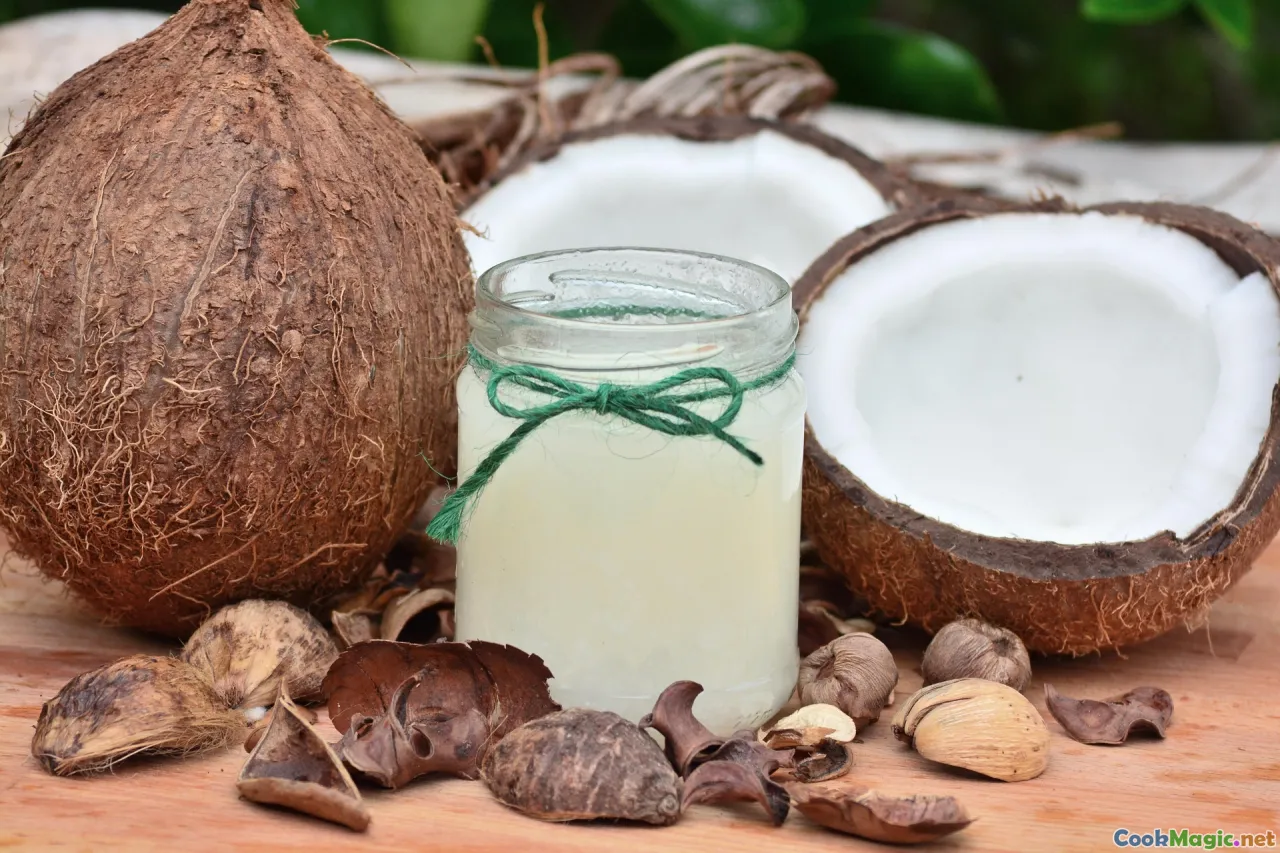
Każdy rendang zaczyna się od rempah — dosłownie „przyprawa”, ale także pasty, która rośnie w potrawę. Tutaj rodziny stają się niezwykle precyzyjne. Kompozytowy przepis rempah, który zebrałem od trzech cioć na Haig Road:
- 20 suszonych chili, posiekanych i bez pestek, zmiękczonych w gorącej wodzie aż staną się elastyczne (wybierz chili garing dla czerwieni, dodaj kilka cili padi dla ostrości, jeśli twoja rodzina lubi pikantność).
- 6 świeżych czerwonych chili dla jasności.
- 8 cebulek szalotki (lub solidny, niechlujny garść o wadze około 250 g), obranych.
- 6 ząbków czosnku.
- 40 g świeżej kurkumy, starta i pokrojona.
- 1 kciuk galangalu (około 50–60 g), obrany i pokrojony w plastry.
- 2 łodygi trawy cytrynowej, tylko białe, zgniecione, drobno posiekane.
- 1 łyżka nasion kolendry, 1 łyżeczka nasion kminu, 1 łyżeczka nasion koperu, prażone na suchej patelni aż pachną.
- 5 candlenuts (buah keras), lekko prażonych.
- Sól do smaku, dodawana później, by wydobyć wodę podczas tumis.
Niektóre rodziny dodają pół cala imbiru dla ciepełka; inne zabraniają, twierdząc, że zaburza rezonansowy, sosnowy tenor galangalu. To tutaj wchodzi batu giling — stary granitowy wałek i płyta — w rozmowę. Kamień jest ciężki, prymitywny i doskonały. Rozbija komórki; nie tylko tnie je. Różnica? Aromat destyluje się bez ostrzy, które się nagrzewają i napowietrzają pastę; tekstura jest lekko gruboziarnista, co pomaga rempah „złapać” olej — drobne rysy, które brązowieją i później przylegają do mięsa.
Jeśli musisz użyć blendera (wielu z nas tak robi na mieszkaniach HDB), rób to z szacunkiem:
- Pokrój aromaty na drobne kawałki, aby ostrza gładko ścinały.
- Dodaj minimalną wodę. Jeszcze lepiej dodaj odrobinę oleju zamiast wody dla bogatszego, szybszego pecah minyak.
- Pulsuj na krótkie serie; nie rozdrabniaj na puree. Chcesz mokry rumiek, nie zupę.
Pecah minyak to ceremoniał. Rozgrzej hojny olej — niektórzy przysięgają na olej kokosowy dla głębszego rezonansu, inni na neutralny olej, aby nie zaburzać aromatu — w kuali aż zacznie błyszczeć. Wsuń rempah i posłuchaj: powinien sykować, a potem ucichnąć, gdy woda wyparuje. Mieszaj powoli w wolnych ósemkach senduk kayu, drewnianą łopatką, zdzierając dno z czułością. Teraz dodaj odrobinę soli: nie doprawiasz, tylko wyciągasz wilgoć i przyspieszasz pecah minyak. Nie ma timera dla pecah minyak; są tylko znaki:
- Kolor spada z czerwono-pomarańczowego do głębszego, ceglisto-brązowego.
- Zapach przechodzi z surowo-zielonego na karmelizowaną przyprawę.
- Pasta odłącza się od patelni, a na brzegach pojawiają się drobne oleiste kratery.
- Warstwa oleju czerwono-złotego oddziela się i gromadzi przy krawędziach.
To zwykle 25–40 minut na średnim ogniu dla rodzinnej porcji. Ciocia Rosnah mawia: „Pozwól pasty walczyć z tobą na początku. Później zatańczy.” Jeśli pasta grozi przypaleniem, zmniejsz ogień i dodaj łyżkę oleju — nie wody — chyba że naprawdę popełniłeś błąd i musisz przerwać rumienienie.
Cuts of Beef and the Science of Tenderness
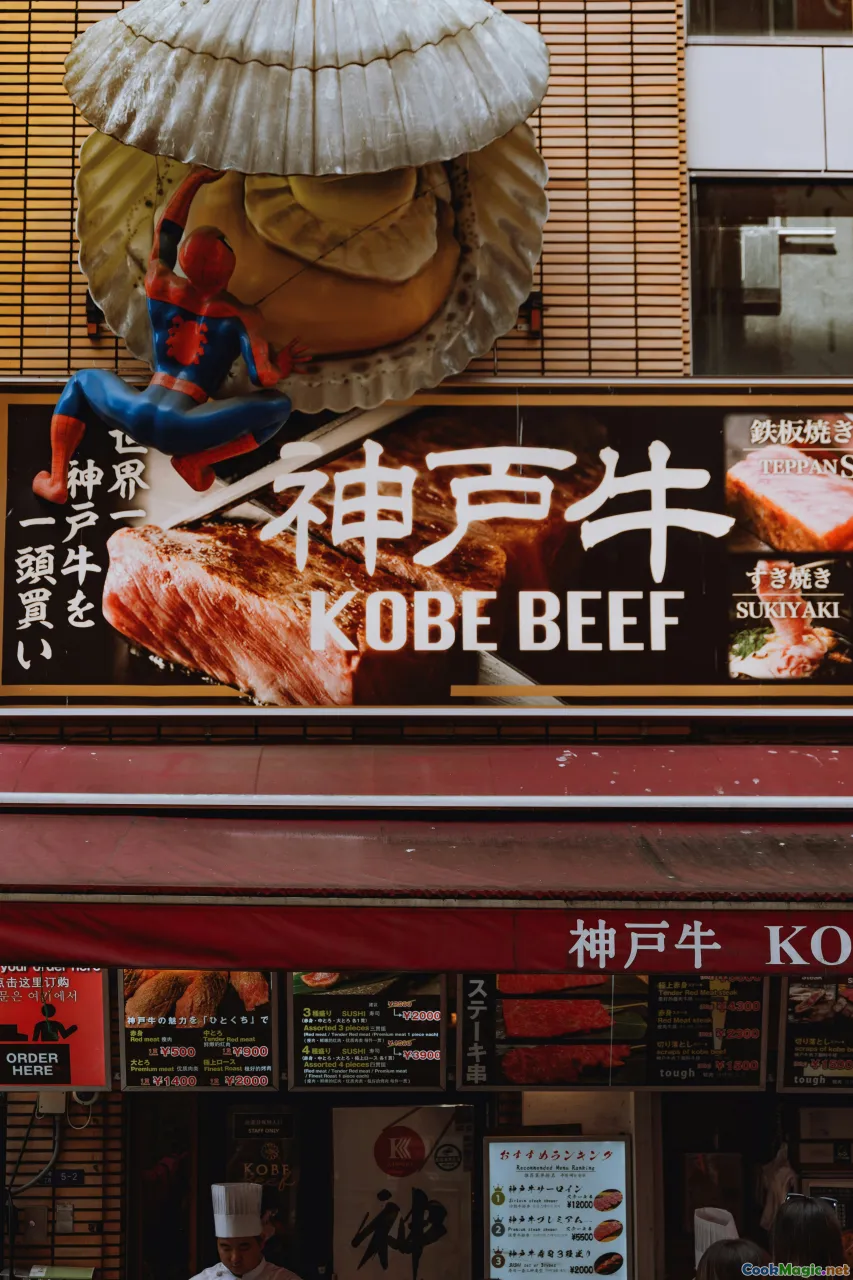
Rendang to mięso, które nauczyło się relaksować. Kawałek ma znaczenie, bo sos prosi o czas. W singapurskich targowiskach i halalowych sklepach mięso widzisz:
- Shin/Shank (tulang): bogaty w kolagen, z wyraźnym włóknem; ulubiony do długiego gotowania, które przekształca żelatynę w kremową konsystencję.
- Policzek (pipi): jeśli masz szczęście znaleźć go na Tekka Market, to cud tkanki łącznej, który staje się kremowy.
- Brisket (dada): tłusty i aromatyczny, ale zwróć uwagę na końce — część „point” lepiej znosi długie duszenie.
- Chuck (bahu): dostępny i niezawodny, z wystarczającą ilością kolagenu, by przetrwać podróż.
- Short rib (iga): dla bogatszego rendangu; kości dodają głębi smaku.
W mieście, gdzie przestrzeń i czas są na wagę złota, niektórzy domowi kucharze sięgają po szybkowary. Używane z rozsądkiem skracają etap zmiękczania bez utraty głębi. Jednak trzeba strzec tekstury: zmiękczaj mięso osobno pod ciśnieniem z odrobiną soli i daun salam (liść laurowy indonezyjski) przez 20–25 minut, potem wlej to do rondla z rempah i mlekiem kokosowym, aby redukowało się delikatnie. Jeśli wszystko zrobisz razem pod ciśnieniem, dostaniesz miękkość, a sos będzie smakował na parze, a nie „wymuszony".
Dlaczego kolagen ma znaczenie: gdy się topi, żelatyna kołuje językiem, tworząc gładkość, która łączy się z olejami kokosowymi i tostowanymi cząstkami kokosowymi. Fazy płynne jednoczą się, czyniąc potrawę bogatszą niż sugerują kalorie. To kulinarna chemia w sarongu.
Dla rendangu z Ayam (kurczaka), rodziny często wybierają uda i skrzydełka. Mięso potrzebuje mniej czasu; celem jest półsucha glazura, a nie długa, cierpka redukcja. Niektórzy dodają odrobinę asam jawa (wody tamaryndowej), aby zbalansować delikatny smak drobiu. Kości w sosie dodają mu subtelny posmak.
Coconut Alchemy: Santan, Kerisik, and the Long Slow Darkening

Kokos to sposób, w jaki rendang przypomina tropiki. Mówimy o warstwach:
- Santan pekat: gęste mleko kokosowe z pierwszego tłoczenia; wyciśnięcie z świeżo startej kokosowej śmietanki z minimalną ilością wody.
- Santan cair: cieńsze drugie tłoczenie; mleczny, słodki, używany do objętości i dłuższego gotowania.
- Kerisik: starty kokos, prażony do koloru kasztanowego, a następnie rozgnieciony na oleistą pastę; to nuta basowa, orzechowy autorytet.
W Singapurze, jeśli nie możesz wycisnąć własnego santanu, marka Kara to powszechny podstawowy produkt; Ayam Brand także; sztuczka to wstrząsnięcie pudełkiem i delikatne podgrzanie mleka, aby tłuszcz się rozproszył. Ale jeśli odwiedzisz człowieka od kokosów — Tekka Market ma jednego, Geylang Serai innego — poczujesz różnicę w zapachu i doznaniach ust. Świeże mleko ma zielonkawy, słodko-orzechowy zapach, którego opakowania nie oddają.
Tost kerisik na suchej patelni na małym ogniu. Z jasnego stanie się blond, a potem nagle brązowieje; mieszaj cały czas, wdychając zapach tropikalnego warsztatu drewnianego. Rodziny opisują idealny kolor kerisik różnie: niektórzy wolą kopi-O (prawie czarny), inni brąz w stylu tosta kaya. Im ciemniej, tym bardziej gorzki brzeg; gula Melaka zrównoważy to. Rozgniataj prażony kokos, gdy jest ciepły, aby oleje uwolnić; chcesz wilgotną, grudkowatą pastę, która plami moździerz.
Na kuchence, po pecah minyak, wlej najpierw santan cair; to kupi czas, by wyciągnąć mięso. Dodaj zgniecione trawy cytrynowej, porwane liście kaffiru, węzeł liścia kurkumy. Włóż asam keping, jeśli twoja rodzina lubi kwasowość; inni wolą wycisnąć asam jawa później, aby kwaśność była jasna. Doprowadź garnek do spokojnego błysku, a nie wrzenia. Mieszaj w jednym kierunku co kilka minut, skrobując karmelizowane fragmenty z krzywizn kuali. Jeśli mleko kokosowe się zsiada, to znak, że byłeś za surowy — obniż ogień, mieszaj delikatnie i dodaj trochę więcej mleka kokosowego, by to odzyskać.
Gula Melaka nie ma tu słodzić; ma zaokrąglić gorycz z ciemnego kerisik i korzennego charakteru turmeric. Użyj umiarkowanej ilości, startych nożem — spróbuj, mieszaj, poczekaj. Nie doprawiasz gulaszu; prowadzisz powolny chór. Sos powinien z mlecznego przejść w lakierowaną konsystencję, olej staje się odcieniem zachodzącego słońca, czerwono-pomarańczowy od papryczek i barwy kurkumy.
Aunty Rosnah’s Open House Rendang (A Story and a Method)
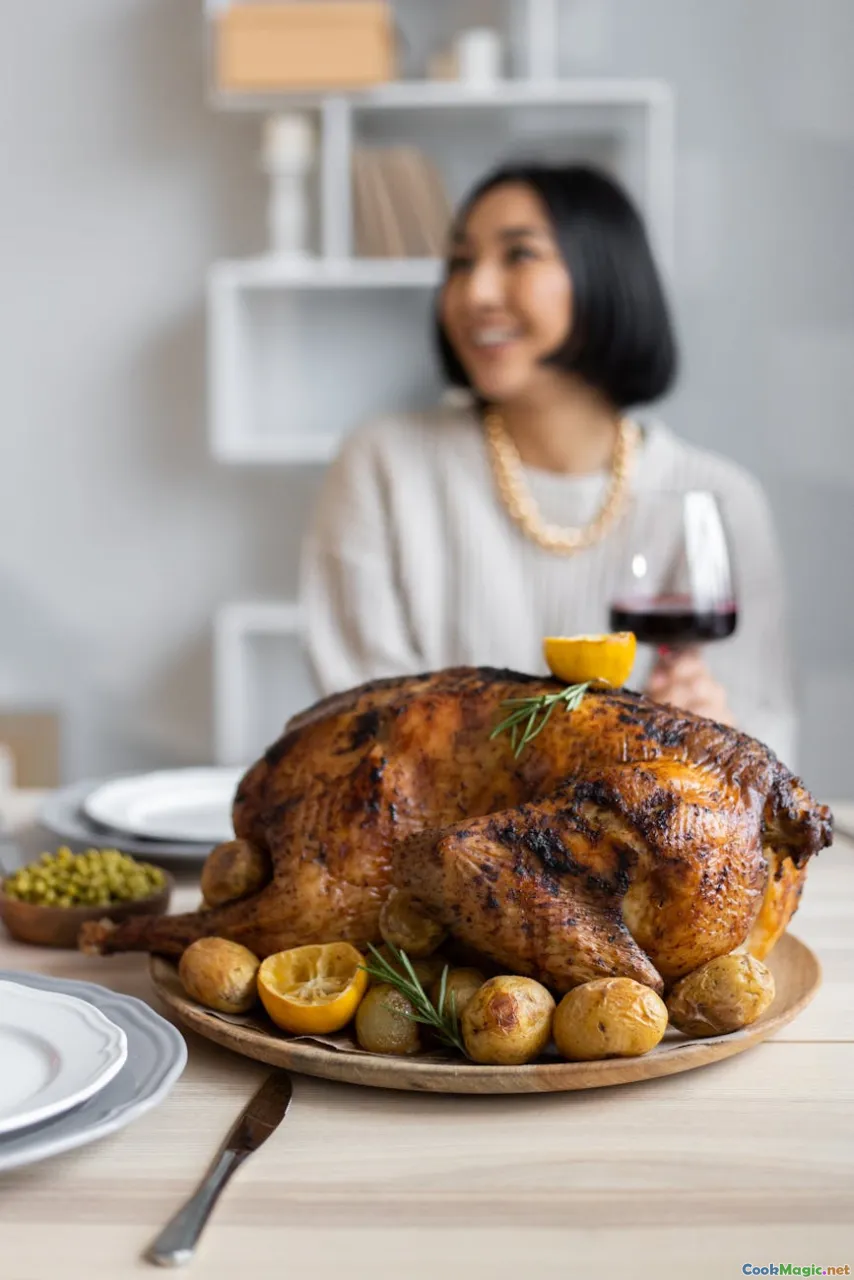
Rosnah mieszka w czteropokojowym mieszkaniu w Bedok North; jej korytarz to galeria paproci i dzwonków wietrowych. Robi rendang dzień przed otwartym domem, aby mogło odpocząć przez noc i ułożyć się w sobie. Gotuje w zniszczonej kuali, odziedziczonej po matce — sfatygowanej, z błyskami osadów czasu, z rysami i czarną, doświadzoną podstawą. „Periuk baru tak sedap,” żartuje — nowe garnki nie smakują dobrze.
Jej metoda mierzy się w minutach i plotkach. Oto jej rytuał, napisany tak precyzyjnie, jak potrafię, pozostając wierny jej rytmowi:
Składniki na 8–10 porcji:
- 2,5 kg wołowej goleń, pokrojonej na duże kostki (około 5 cm).
- Olej (najlepiej kokosowy) do tumis: 120–150 ml.
- Pasta rempah (patrz wcześniejsze proporcje) plus 2 dodatkowe łodygi trawy cytrynowej, zgniecione.
- 800 ml gęstego mleka kokosowego (pierwszego tłoczenia lub odpowiednika w kartonie) + 600 ml cienkiego mleka kokosowego.
- 5 liści kaffir lime, zgniecionych.
- 1 liść kurkumy, zawiązany.
- 2 plastry asam keping, lub 2 łyżki wody asam jawa, do smaku.
- 150 g kerisik, uprażonego i rozgniecionego.
- 25–30 g gula Melaka, startego.
- Sól do smaku (zacznij od 1,5 łyżeczki, dopraw później).
Kroki:
- Marynata z umiarem: Wrzuć wołowinę z 1 łyżeczką soli i 1 łyżką rempah. Odstaw, podczas gdy prażysz kerisik i przygotowujesz garnek. Ta wstępna sól nie chodzi o głębokie doprawienie; to osmozyjnie zabezpieczenie równomiernego doprawienia.
- Pecah minyak z cierpliwością: Podgrzej olej w kuali aż stanie się luźny jak woda. Dodaj rempah w dwóch dodaniach, by uniknąć przepełnienia i zbyt szybkiego obniżenia temperatury. Mieszaj, skrob i słuchaj, aż pasta wyemituje olej i zciemnieje. Posól lekko. Wrzuć zgniecione trawy cytrynowe.
- Zaproś mięso: Dodaj wołowinę i obtocz każdy kawałek w paście. Garnek zapadnie na kilka minut w ciszę, gdy mięso je chłodzi; utrzymuj średni ogień. Gdy pasta przylega błyszcząco do mięsa i brzegi skwierczą ponownie, kontynuuj.
- Zanurz i szept: Wlej cienkie mleko kokosowe najpierw, tyle, by przykryć około 75% mięsa. Dodaj liście limau i zawiązany liść kurkumy. Doprowadź do delikatnego, stałego duszenia. Mieszaj co 5–7 minut, skrob dno. Ten etap trwa 60–90 minut. Szukasz momentu, gdy mięso robi się miększe.
- Zgęstnij i pogłęb: Dodaj gęste mleko kokosowe, kerisik i gula Melaka. Kontynuuj duszenie bez pokrywki. Kolor pogłębi się; sos zgęstnieje i wyda olej. Teraz dodaj asam keping. Gdy sos zacznie przylegać do boków, zmniejsz ogień i mieszaj częściej. Chcesz ciemne brzegi, ale nie spalonej goryczki.
- Doprawienie i spokój: Spróbuj soli i kwasowości. Powinieneś wyczuć ostrość, łagodną słodycz i cytrusowo-tropikalny akcent z liści limonki. Jeśli jest płasko, dodaj odrobinę asam lub szczyptę soli. Kontynuuj, aż mięso nie będzie opierać się łyżce, nie rozpadając się, ale z delikatnym pod lágr. Całkowity czas: 2,5–3 godziny od rempah do odpoczynku, czasem więcej, jeśli ogień jest skromny.
- Odpoczynek na noc: Wyłącz ogień. Pozwól garnek ostygnąć, a potem wstaw do lodówki. Olej uniesie się i zestali jak lakier; smaki złączą się.
- Odrodzić: W dniu ponownie podgrzej powoli. Kolor będzie ciemniejszy, olej głębszy, granatowy. Podawaj z ketupatem lub nasi impit, acar ogórkowy i krzyk do siostrzenicy, by przygotowała talerze. Pierwszy łyżeczka powinna smakować dymem bez ognia, kokosem bez mleczności, ostrością bez agresji — to, co starsi nazywają „masuk,” czyli smaki weszły w siebie całkowicie.
Jej sekret, wyjawiony z konspiracyjnych wzruszeń ramion: dodaje dwa liście kurkumy, a nie jeden, i drze jeden na cienkie wstążki. „Bau daun kunyit lain, tau,” mówi — zapach liścia kurkumy jest inny, wiesz. Nie a spice note, but a green, resinous lift that makes the room feel larger.
Variations Across the Island: Tok, Minang, and Homebrew Hybrids

Not all rendang on this island speaks the same dialect. Try the Perak-born Rendang Tok that some families in Jurong swear by. Its signature is a tapestry of dry spices—cinnamon, cloves, star anise, cardamom—dosed more assertively than in Minang rendang. The reduction goes further, sometimes to a near-dry crumble that cloaks beef in a sable coat. The color approaches coffee grounds; the fragrance, like the inside of an antique chest. It’s no accident Tok means “grandfather”—it tastes like time.
The Minang style, exemplified at Rumah Makan Minang or Warong Nasi Pariaman, tends to be deeply reduced but not crumbly-dry, with a polished coconut sheen and a balance that leans toward savory heat, lime leaf high notes, and a clean finish. Kerisik is present, but not in a way that shouts.
In Peranakan households—visit Candlenut and you’ll see how a modern kitchen pays its respects—rendang may come enriched with extra candlenut for body and occasionally a calibrated sweetness from gula Melaka that flatters turmeric’s earthiness. Some green rendang variants, in which green chilies star, yield a milder, herbaceous glow. In Malay homes, green rendang ayam can be a favorite with children: less fiery, more perfumed.
Then there are the resourceful riffs: rendang paru (beef lung) emerges a little chewy, carrying smoke from a prior blanch-fry step; rendang kerang (cockles) briefly cooked so they retain brine and snap, used as a centerpiece at some family gatherings. Purists may frown, but in Singapore, you’ll find people eating what their grandparents could find and afford. The technique persists even when the protein migrates.
Equipment Matters: Kuali, Belanga, and the Quiet Heat
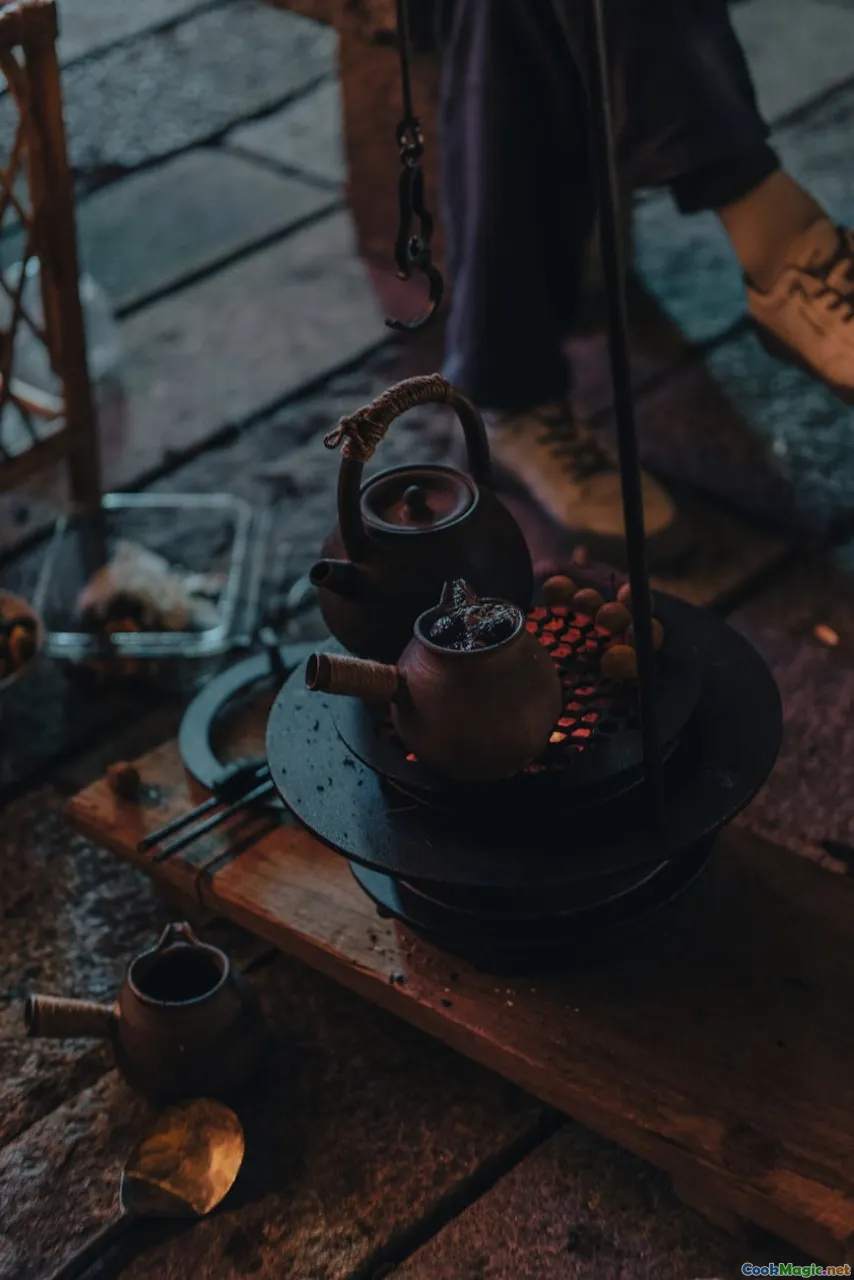
Ask any nenek which pot is right and she’ll point to the one that looks like it has survived a traffic accident. The kuali’s generous surface encourages reduction; its sloped sides concentrate heat and make stirring natural. A heavy-bottomed pot is a close second, but the kuali is a cultural tool as much as a cooking one. Clay pots (belanga) are romantic and practical: they absorb heat and radiate it gently, protecting coconut milk from harsh boiling. If using clay, mind the first heat—gradual—so you don’t crack the pot. Modern realities mean many of us cook on induction. A flattened, heavy wok pan or Dutch oven works. The trick is to simulate the kuali’s wide evaporation area and to manage heat well. A cast-iron wok on induction is a good compromise, though it is heavy enough to make your wrist complain by hour two.
The senduk kayu is the unsung hero: a wooden spatula with an edge worn to your pan’s curve. Plastic will melt, metal will scrape, silicone will flex too much when the paste fights you. In many households, the stirring tool is family property, absorbing ghost aromas that, if you’re sentimental, you swear you can taste.
Time, Patience, and the City: Adapting Tradition to HDB Kitchens

Rendang is a long conversation with your stove. But many of us live in apartments where open windows mean perfume drifting into neighbors’ laundry. Here’s how families adapt without surrendering soul:
- Batch the rempah: Grind once for two or three dishes. Freeze in ziploc bags pressed flat; they defrost fast and invite impromptu rendang or sambal tumis.
- Control the steam: Use a splatter screen to ease evaporation without painting your backsplash red. A gentle fan facing the kitchen window pushes aroma out.
- Oven finish: Once your sauce has thickened and the meat is near tender, slide the pot (if oven-safe) into a 150°C oven, uncovered. The even heat encourages reduction without scorching; stir every 20 minutes.
- Pressure-cook the meat separately: Reserve the rendang’s reduction stage for the stovetop, where browning and pecah minyak perform better. Your neighbors will smell less, you’ll taste more.
- Respect the clock: Start early. Rendang is not a 60-minute dinner. It’s a domestic ritual best accompanied by a slow radio and the rustle of banana leaves being folded for ketupat in the next room.
Buying Well in Singapore: Markets, Brands, and the Coconut Man

Where you shop shapes how your rendang speaks.
- Tekka Centre (Little India): For beef cuts beyond the ordinary. Ask for shin, cheek, or short rib. Butchers here understand "for rendang" and will slice accordingly.
- Geylang Serai Market: Aromatics central. Daun kunyit, kaffir lime leaves, fresh turmeric, and the freshest grated coconut. Ask the coconut vendor to separate the first and second press if you’re finicky.
- Tiong Bahru Market: Quality produce and herbs. Not all stalls will know daun kunyit; ask gently and describe.
- Haig Road Food Centre vicinity: Spice shops and Malay provision stores with pre-roasted kerisik if you’re in a pinch, though fresh toasting still wins.
- Joo Chiat and Katong: Peranakan grocers with excellent gula Melaka and large, fragrant kaffir lime leaves.
- Mustafa Centre: Spices in bulk—coriander, cumin, fennel; affordable candlenut; stainless senduk if you need a new one.
Brand notes:
- Coconut milk: Kara is reliable, Ayam Brand good. Shake well; warm by setting the packet in warm water before adding to the pot.
- Gula Melaka: Look for “Gula Melaka Asli” in wrapped cylinders; the fragrance should be toffee-caramel, not burnt sugar.
- Kerisik: If buying ready-made, choose vacuum-sealed packs with a warm brown color and oily sheen; re-toast lightly to refresh aroma.
Troubleshooting: Fixing Split Sauces, Tough Meat, or Bland Spice
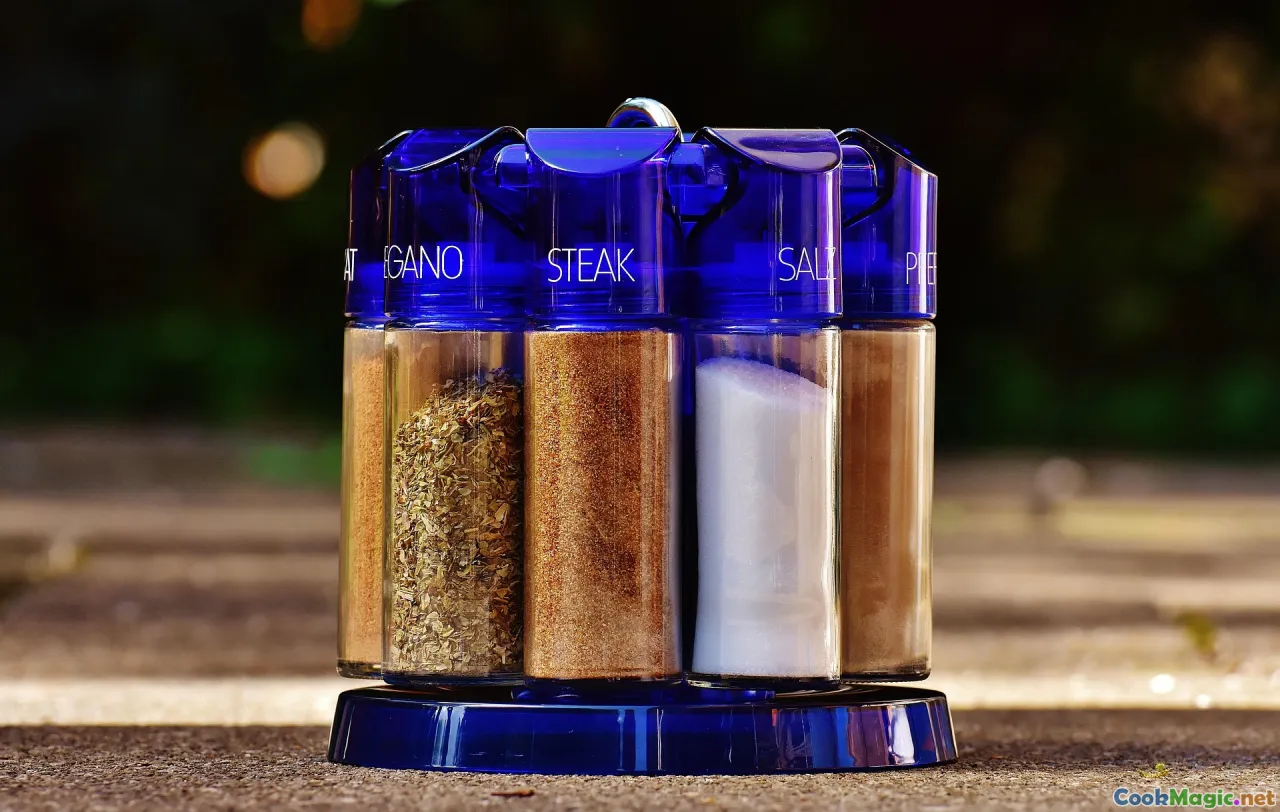
Rendang forgives, but it also keeps receipts.
- Sauce split early, curdled coconut: Your heat was too high or water too low too soon. Remedy by lowering heat, adding a half cup of thin coconut milk or even hot water, and stirring until the emulsion re-forms. Next time, start with thin milk and pace yourself.
- Meat is tender but sauce tastes raw: You rushed the rempah. Pecah minyak is not optional. Cook the paste longer next time; for now, continue simmering until the rawness retreats. A touch more oil can help carry the flavors.
- Meat is tough after hours: Check your cut; some “stew beef” blends include round, which refuses tenderness. If you’re stuck, a covered, low oven stint at 140–150°C for an hour can nudge collagen along without boiling the sauce.
- Too bitter: Over-toasted kerisik or burnt spices. Mitigate with a measured addition of gula Melaka and a splash of coconut milk, then simmer gently. The bitterness won’t vanish, but it will round off.
- Too sweet: Balance with asam—either asam jawa water or an extra asam keping slice—and salt. A few more torn lime leaves can freshen the edges.
- Flat flavor: Salt is often the culprit, but also check acidity. A rendang that hums has a tiny tang. If it’s still dull, your chilies may be stale; use fresher dried chilies next time, and toast your seeds more confidently.
- Greasy mouthfeel: Rendang should glisten, not pool. Did you add too much oil or not reduce enough? Spoon off excess oil once flavor is set; save that oil—it’s liquid gold for frying eggs or stir-frying vegetables.
Beyond Beef: Chicken, Jackfruit, and Plant-Based Paths

While beef reigns, Singaporean kitchens have long experimented based on faith, health, or budget. Chicken rendang aims for a satiny glaze rather than a dry reduction. Start by marinating chicken pieces lightly with turmeric and salt; tumis the rempah, then add chicken and medium heat until the juices run and mingle. Add santan cair, simmer until just tender, then finish with santan pekat and a modest spoon of kerisik. Chicken overcooks easily; the sauce matters more than the minutes.
Green jackfruit (nangka muda) makes a credible plant-based rendang, beloved by some Indonesian families and increasingly popular here. The fibrous “meat” drinks the rempah and coconut gracefully. Parboil to neutralize any canned aroma; then cook it as you would beef, halving the simmer time. Mushrooms (oyster or king oyster) can join for texture, but avoid watery varieties that dilute your reduction.
For tofu and tempeh, fry lightly before introducing to the sauce; their surfaces will hold flavor better and prevent sogginess. Lean into kerisik and lime leaf to keep the dish buoyant.
Serving, Storing, and the Crescendo of the Second Day

Rendang is never alone on the table. Its perfect partner is restraint: plain rice, ketupat, or nasi impit, which let the sauce speak. During Hari Raya, families queue at the bazaar stalls for lemang—sticky rice cooked in bamboo, sweet with coconut smoke—which, sliced into rounds, offers a platform that soaks and resists like a fine sponge.
Garnishes are few and purposeful. Torn turmeric leaf as a perfumed confetti. Acrid-bright acar of cucumber, carrot, and pineapple, vinegar-sweetened, to refresh the palate. Sambal belacan for the heat-inclined. Some households put out a dry serunding (floss) of coconut and spice, which is cousin to the rendang’s nuttiness and makes rice disappear faster.
If the kitchen is the heart, the fridge is the memory. Rendang improves a day after cooking and holds for up to five days, the oil guarding flavor. Reheat gently; never boil. Freeze in shallow containers for months; thaw overnight in the fridge to preserve texture. The oil that rises is a storyteller; don’t discard it all. Warm a spoonful and drizzle over fried eggs or toss with blanched green beans, and the kitchen smells like last weekend’s laughter.
The Taste of Time: Why Rendang Matters in Singapore

It’s tempting to say rendang is just food: meat, spice, coconut, time. But ask anyone who has stood in a hot kitchen on a humid afternoon, stirring a kuali while listening for the voice of a paste splitting into oil, and they’ll tell you: rendang is the taste of held breath. It is concentration made edible, patience turned glossy.
Singapore is a city that forgets quickly. Buildings go down while you’re still giving directions using them as landmarks. New malls bloom and die. But a pot of rendang ties space to time. It carries Kampong Glam’s old alleys into HDB corridors. It remembers Minangkabau buffalo migrations and translates them into a Shin turned soft under a wooden spoon. It memorializes a grandmother’s hands without saying her name, because the scent is enough to call her back.
In my own notebooks, I have notes from a visit to a family in Yishun—Uncle Din and Makcik Siti—who argued for twenty minutes about the order to add coconut milk. She won, as wives do, and the first-press went in last. The taste was a proof of concept: the sauce shimmered like silk and the meat tasted of beef first, coconut second, spice always. In their living room, kids built ketupat with plastic ribbons, and the television leaked a Hari Raya special that everyone ignored. The rendang did all the talking.
Maybe that’s the last, most Singaporean thing about rendang: it is plural. It is Malay, Minang, Peranakan, Javanese-influenced. It belongs to families who eat with three fingers and those who serve with cutlery polished to mirrors. It sits at hawker stalls like Hajjah Maimunah and in Michelin-lit dining rooms like Candlenut, wearing different clothes but keeping its center intact.
So here is the invitation, whether you inherited a batu giling or a blender: make rendang soon. Make it not because it is fashionable, but because it leaves a scent in your curtains that lasts longer than a season; because it teaches your hands to measure time in glugs of coconut milk and patient stirs; because when you ladle it to someone you love, you are placing hours on a plate, dark and fragrant, a little spicy, and utterly forgiving. In a city that is always moving, rendang is the delicious act of staying still long enough to let oil split, sauce darken, and memories set.









